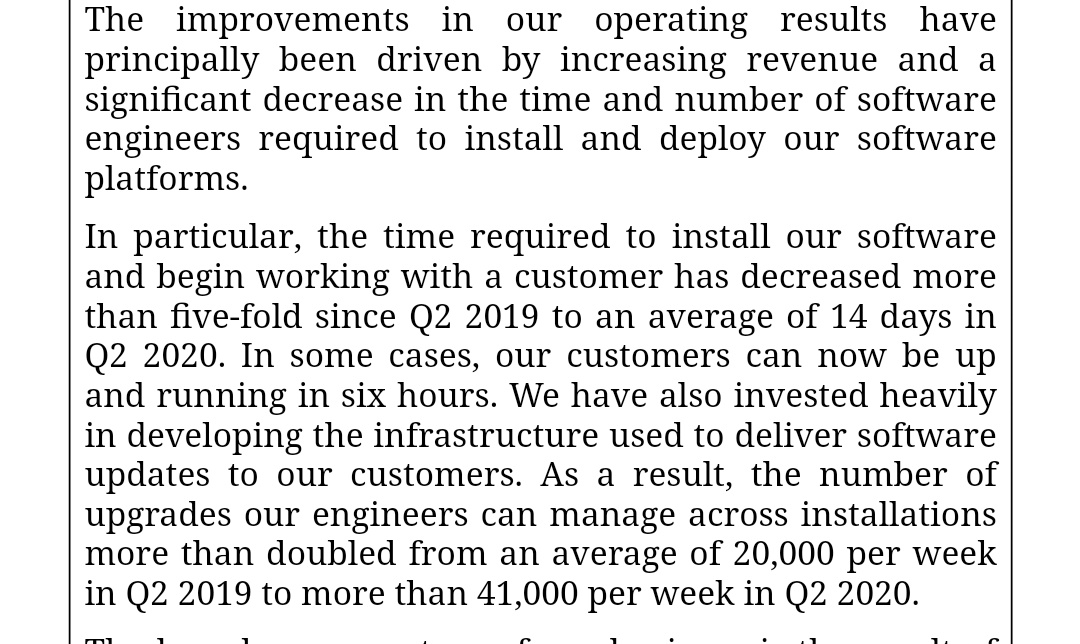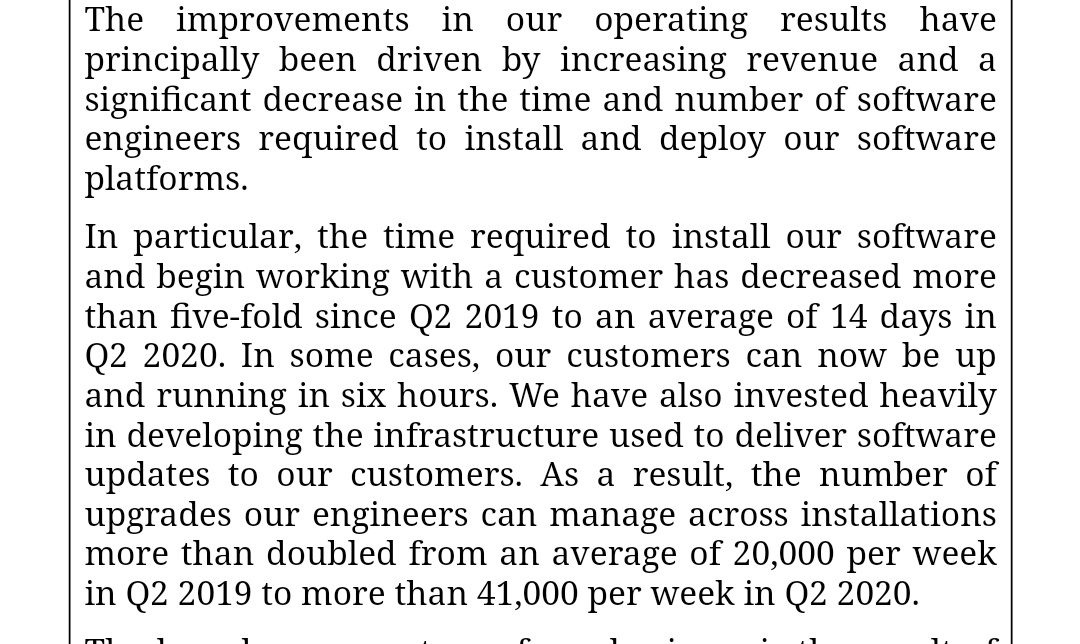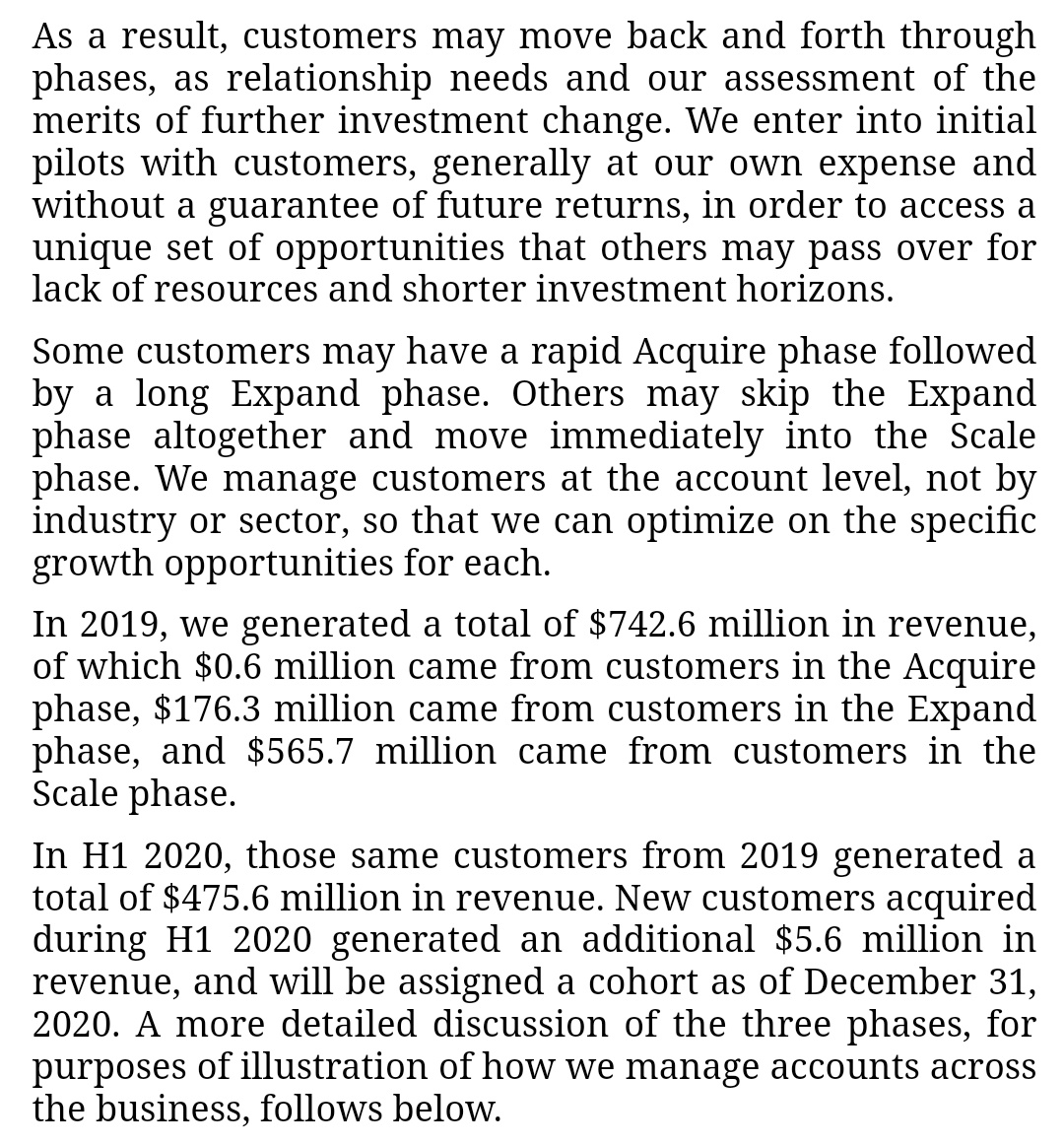I& #39;ve followed Palantir for over 7 years, ever since my time w/ Mu Sigma, and the S-1 document makes for interesting reading. (1/n).
Palantir makes it very clear that they are not in the business of collecting data for their customers.
If you& #39;ve worked in this space, you& #39;ll hear 8/10 enterprises say that they don& #39;t have data and hear 9/10 analytics companies have a strategy to help these enterprises do so.
If you& #39;ve worked in this space, you& #39;ll hear 8/10 enterprises say that they don& #39;t have data and hear 9/10 analytics companies have a strategy to help these enterprises do so.
Given the nature of products (data centric), there is an element of explainability associated with the models and the output. Anyone who& #39;s worked in ML or building ML based products has been familiar with this part of the product development..
These problems do not have ready made solutions and often require customisation of the platform to the problem getting solved. Eg - Fraud detection algos based on classification ML models can be applied in a wide gamut of industries from Fintech to Defense to Customer Support
Hence, standalone deployed products do not exist well. Commonly articulated as a man-machine ecosystem it typically needs customisation/deployment to datasets and business context. Palantir& #39;s man-machine model uses the & #39;man& #39; in the form of fwd deployed engineers who & #39;deploy& #39;
.. which is customising the platform to the context and datasets of the enterprise in question, and the & #39;machine& #39; aspect is the platform itself.
Analytics cos. that started out as services (man-model) are about data scientists building scalable models to solve biz problems..
Analytics cos. that started out as services (man-model) are about data scientists building scalable models to solve biz problems..
.. Have come to realise that they need to build products to scale and be & #39;sticky& #39; within their customers.
They play in the continuum of man-machine model, with a specific % of man/machine that works for them.
How did Palantir end up with man-machine model? How is it evolving?
They play in the continuum of man-machine model, with a specific % of man/machine that works for them.
How did Palantir end up with man-machine model? How is it evolving?
https://econsultancy.com/palantir-s-woes-bring-big-data-challenges-into-focus/
Palantir">https://econsultancy.com/palantir-... tried to form a CPG consortium in 2015, to bring together cos. to use the platform in a standard manner (ie get ur data to the same format as other cos.)
It stumbled, learnt it& #39;s lesson and now it doesn& #39;t want anything to do w/ data collection
Palantir">https://econsultancy.com/palantir-... tried to form a CPG consortium in 2015, to bring together cos. to use the platform in a standard manner (ie get ur data to the same format as other cos.)
It stumbled, learnt it& #39;s lesson and now it doesn& #39;t want anything to do w/ data collection
Palantir& #39;s man-machine model, was a solution to help enterprises make sense of setting up the platform and customise the product and was a SERIOUS blimp in its biz model.
Why? Time to get customers up and running took months
Why? Time to get customers up and running took months
While this is mitigated by focusing on a specific industry/class of problems, Palantir works across industries, magnifying this problem.
Profitability:
The model& #39;s profitability hinges on the (1) Time to setup within an enterprise
(2) Reducing the man component of each deployment
(1) and (2) are inter related and there are signs that Palantir is taking this very seriously.
The model& #39;s profitability hinges on the (1) Time to setup within an enterprise
(2) Reducing the man component of each deployment
(1) and (2) are inter related and there are signs that Palantir is taking this very seriously.
Scale:
Palantir is a behemoth in this space, but what comes in the way of it scaling?
(1) Analytics is getting fragmented by multiple companies offering pointed tools and solutions for biz problems. It is very common for a fortune 500 company to work with 15+ providers cos..
Palantir is a behemoth in this space, but what comes in the way of it scaling?
(1) Analytics is getting fragmented by multiple companies offering pointed tools and solutions for biz problems. It is very common for a fortune 500 company to work with 15+ providers cos..
there are 100+ decision makers and companies operate in silos within themselves.
(2) The buy vs build problem
(2) The buy vs build problem
Palantir& #39;s POV on 1) is clear. Palantir believes (and goes into considerable detail later) that Enterprises focusing on optimizing specific functions like sales or marketing are not doing enough and they should be using an org centric data strategy.
While addressing the Buy/Build problem, interesting insights emerge, some of which I& #39;ve felt & lived thru.
1) When attempting to solve a biz problem, orgs don& #39;t take into account that data gets stale over time. By the time you& #39;re ready, data is useless and you start over again.
1) When attempting to solve a biz problem, orgs don& #39;t take into account that data gets stale over time. By the time you& #39;re ready, data is useless and you start over again.
2) the classic legacy system problem - we use ms access for data, would your model work on those? Trying to replace legacy systems and build a new infra for data is a process many orgs spiral into and abandon midway.
3) Making sense of models - how does a non tech user make sense of your model? The chi square value the reg model throws at the user has to be translated into biz value.
Cos. tend to solve this via training, putting data scientists with biz users etc but is a thorn in the flesh
Cos. tend to solve this via training, putting data scientists with biz users etc but is a thorn in the flesh
Palantir does not provide too much detail into this problem. They acknowledge it as a challenge, but do not delve into details.
Some numbers:
1) TAM - Palantir is not inherently affordable. They want to go after enterprises with >$500mn. in annual revenue
2) ARPU - is Palantir sticky at scale?
a) five yr contracts with enterprises in a field where sales cycles are long and arduous
....
1) TAM - Palantir is not inherently affordable. They want to go after enterprises with >$500mn. in annual revenue
2) ARPU - is Palantir sticky at scale?
a) five yr contracts with enterprises in a field where sales cycles are long and arduous
....
An insight into the sales process puts the below numbers in context
1) Proof of value engagements at cost to Palantir - Acquire phase
2) Expand phase - Solve problems within a function.
3) Scale - Org wide partnership to solve problems (6.6 yr avg time horizon is due to this)
1) Proof of value engagements at cost to Palantir - Acquire phase
2) Expand phase - Solve problems within a function.
3) Scale - Org wide partnership to solve problems (6.6 yr avg time horizon is due to this)
.. with which I& #39;ll end this thread. I barely scratched the surface on this one, and have thoughts turning it into a structured blog post.
Woke up and starting tweeting, hope to do a better job. Comments/feedback welcome!
Woke up and starting tweeting, hope to do a better job. Comments/feedback welcome!

 Read on Twitter
Read on Twitter










